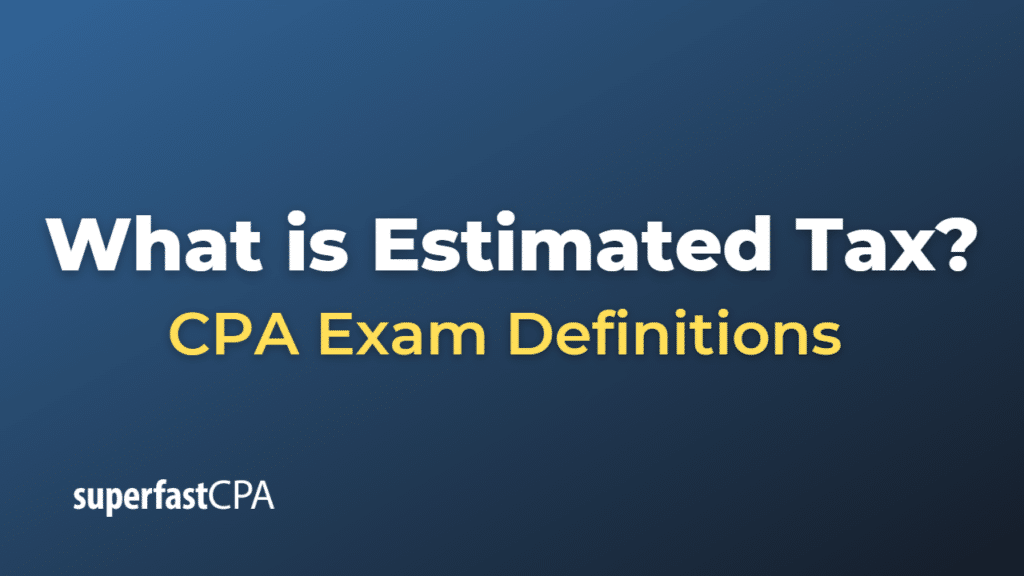Estimated Tax
Estimated tax refers to the method used to pay tax on income that isn’t subject to withholding. This can include income from self-employment, business earnings, interest, rent, dividends, and other sources.
In the United States, as of my knowledge cutoff in 2021, the tax system is a pay-as-you-go system. This means that you’re required to pay taxes throughout the year as you earn or receive income, either through withholding or estimated tax payments. If you don’t have enough tax withheld or don’t make the appropriate estimated tax payments, you may have to pay a penalty.
The Internal Revenue Service (IRS) expects taxpayers to make payments of their estimated tax four times a year (quarterly).
Here’s how it works:
- You first estimate your expected adjusted gross income, taxable income, taxes, deductions, and credits for the year.
- Then, you use this information to calculate your estimated tax for the year.
- You divide your total estimated tax into four payments to be made quarterly, typically by the 15th of April, June, September, and January of the following year.
Remember that this is a general explanation and the rules for estimated taxes can get complex, particularly if you have income from various sources. The IRS provides forms and guides (like Form 1040-ES) to help you calculate and pay your estimated tax. However, it’s often a good idea to consult with a tax professional or financial advisor if you’re uncertain about your obligations.
Example of Estimated Tax
Let’s use a simplified example of a freelance graphic designer named Mary:
- Estimate the Expected Income: Mary expects to earn $80,000 during the year from her various clients. She does not have an employer to withhold taxes from her paycheck, so she will need to pay estimated taxes.
- Estimate Taxable Income: Mary expects $10,000 in business expenses, so she subtracts this from her expected income to calculate her taxable income. Her taxable income for the year is expected to be $70,000 ($80,000 – $10,000).
- Calculate Estimated Tax: Mary then calculates her tax on the $70,000 of income. For simplicity, let’s say her effective tax rate is 20% (this would typically be based on the federal tax brackets and Mary’s state tax rate). So, her total tax for the year is expected to be $14,000 ($70,000 * 0.2).
- Determine Quarterly Payments: Mary divides the total tax by four to determine her estimated quarterly tax payments. She will need to make four payments of $3,500 ($14,000 / 4) throughout the year.
In reality, Mary might also need to account for self-employment tax (which includes Social Security and Medicare tax) and her tax rate could be affected by other factors such as her filing status, deductions, credits, etc. The rules for estimated taxes can be complex, so it’s always a good idea to consult with a tax professional to ensure you’re paying the correct amount.













